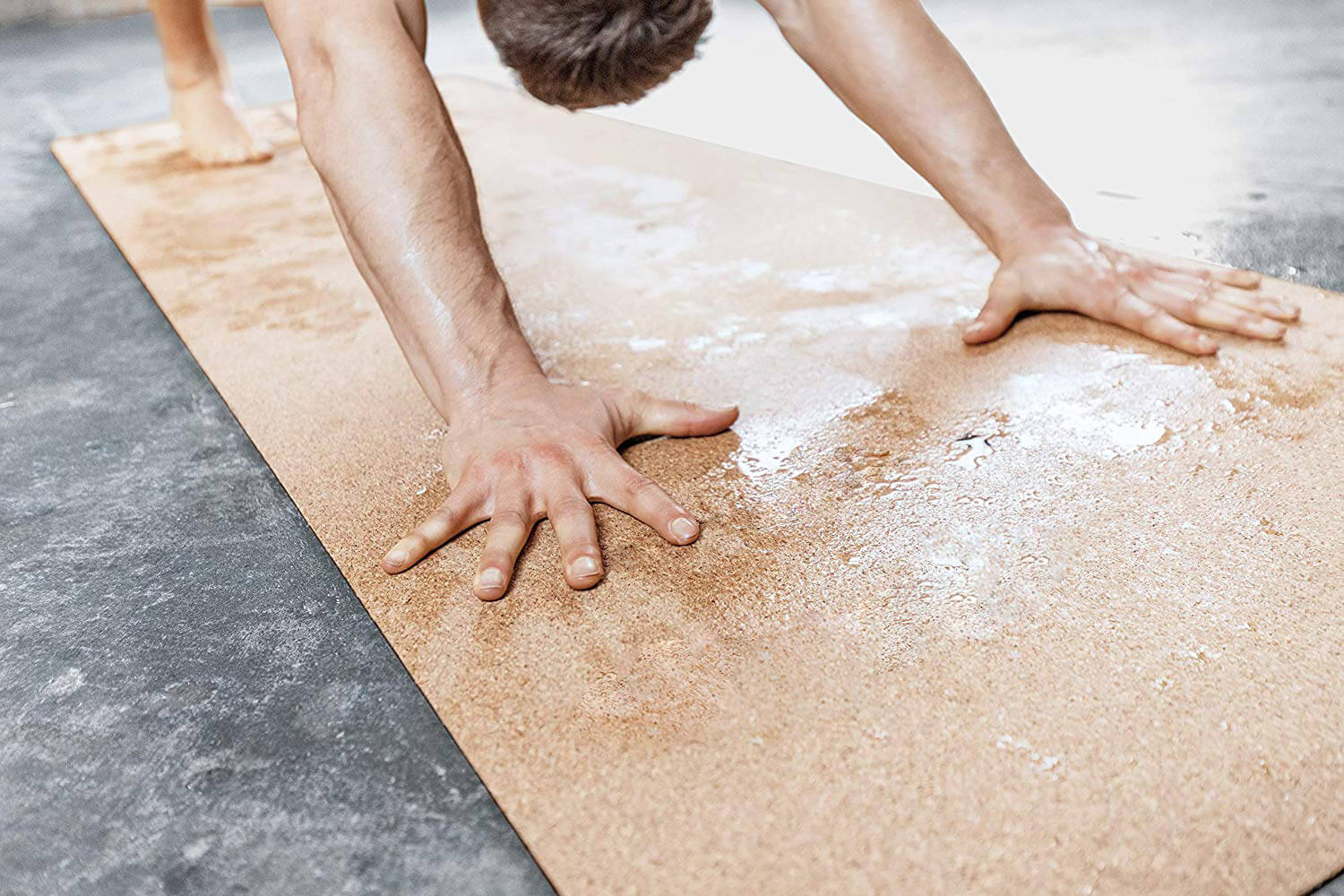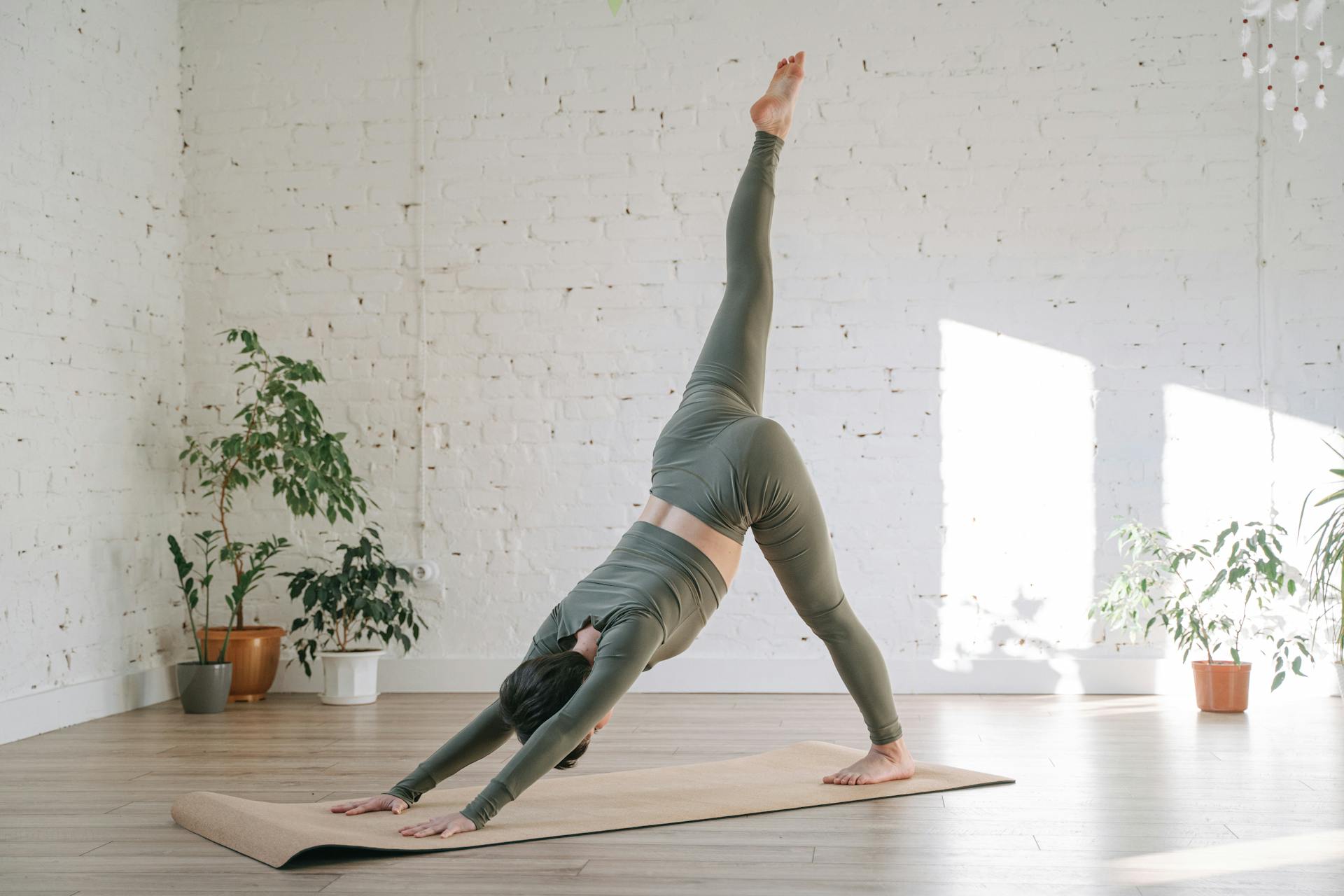There are many different types of yoga mats on the market today. If you’re on the look out for a new yoga mat you might be wondering which one is right for you. Use this guide to find your best yoga mat - one that suits your body, practice and values.
Measurements
The thickness of your yoga mat comes down to preference. Most yoga mats are around 3-4 mm thick. Some find a thinner mat allows for a greater connection to the floor and better balance. Others, especially those with bad knees or back pain like extra padding. If that’s you, look for thicker yoga mats with more cushioning.
The length of your yoga mat depends on your unique body. If you’re on the taller side and often feel like you’re falling off the mat, opt for an extra long mat instead. The Grand Yoga Mat is longer and wider than our standard yoga mats and has plenty of room if you’re taller.
Grip and texture
The grip of your yoga mat can make or break your practice. Sliding around on your mat can make it hard to hold postures, keep your balance and stay focused. This can not only impede your practice but also lead to bad alignment and injuries. The trouble with conventional yoga mats is that they are made from polyvinyl chloride (PVC), a toxic plastic that gets slippery the more you sweat.

If you practice hot yoga or have more of a sweaty, intense practice, cork is a perfect alternative. Cork yoga mats have a soft and smooth texture and contain suberin, a natural waxy substance which makes them non-slip, even in the sweatiest of sessions. But for those who prefer a gentle practice and tend to sweat less, a more textured material such as organic cotton or natural rubber is an ideal choice.
Eco-friendly materials
When buying a yoga mat, be wary of the material it is made from, especially if you’re concerned about it’s environmental impact. Yoga mats made from PVC are a problem because they are hard to recycle. If PVC gets incinerated or buried in landfill it releases harmful dioxin, a known carcinogenic. And that’s not all, other toxins leach from PVC including endocrine-disrupting phthalates as well as heavy metals.
For most of us, we practice yoga to feel good and for the long term health benefits. Practicing on a toxic yoga mat goes against that. Plastic mats are also a breeding ground for bacteria. Who wants to practice on a sticky, smelly yoga (no thanks!). For your health and for the environment, opt for sustainable and recyclable yoga mats. Alternatives include organic cotton, jute, natural tree rubber and cork.It’s not only PVC that should be avoided. Sadly, some big brands say their yoga mats are made from sustainable materials like natural tree rubber, when in fact they are made from thermoplastics which are a cheaper blend of plastic, rubber or other synthetic materials. While thermoplastics are a step away from PVC there is still no such thing as eco-friendly plastic, even though the label may say otherwise. Rubber mats can be on the pricier side, so make sure you’re not paying for harmful materials.
Another option is jute, a natural fibre which can be mixed with rubber. However, some brands mix jute with PER (Polymer Environmental Resin). This material contains PVC and other unspecified additives which are not good for the environment.
When buying any yoga mat, check for labels with clear, accurate, information. When in doubt, do a little homework and be sure to check their website first.

Cork is a great natural alternative, and if you decide on a Valka cork yoga mat, you can rest easy knowing it’s a recyclable, 100% biodegradable, raw material that is safe for the environment. They are also naturally antimicrobial, meaning it will resist mould, bacteria and bad smells. To find out more about the unique properties of cork, check out our post on why cork is the perfect yoga companion.
Cost
Eco-friendly yoga mats are often dearer than plastic yoga mats sold in large department stores (although not always!). That’s because sustainable materials generally cost more to grow and source. Often too, the brands themselves support practices like ethical sourcing and recyclable packaging. Isn’t that a beautiful thought during yoga? Not only that, because these yoga mats are made from higher quality materials they will usually last longer. When you take all that into consideration, it’s easy to see why they cost more. If you’re searching for a new yoga mat, it’s worthwhile investing in a sustainable alternative.

If you’re budget conscious, never fear! There’s no need for you to miss out on owning a sustainable yoga mat. Use an organic cotton yoga mat or even a rug instead of plastic or foam. The great thing about cotton yoga mats is that they are machine washable and are often still used in Mysore (the birthplace of Ashtanga Vinyasa Yoga). While they may not provide the same cushioning and longevity as other yoga mats, they are still a great choice and won’t harm your health or the environment.
Here at Valka Yoga we’re committed to providing quality, non-toxic, ethically sourced yoga products. You can learn more about our sustainability practices here.



